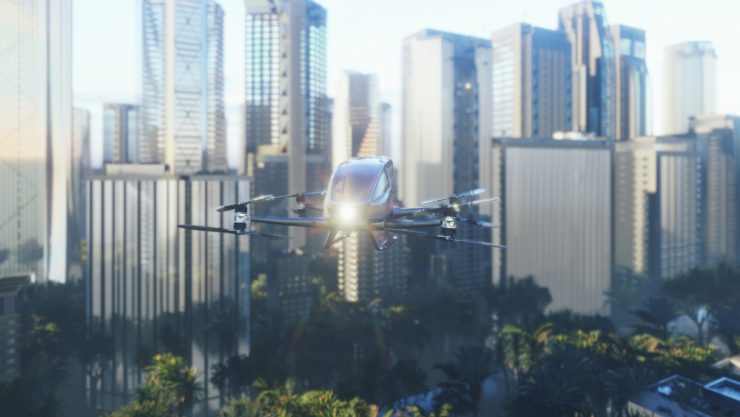NASA’s Aeronautics Research Mission Directorate (ARMD) is seeking advanced air mobility (AAM) vehicle industry partners that will focus on demonstrating integrated AAM operations in flight activities to be conducted as part of the first AAM National Campaign (NC-1) in 2022. NASA is currently seeking AAM vehicle developers that propose to begin information exchange with NASA in preparation for flights as part of NC-1 in 2022.
NASA’s ARMD plans to host an Advanced Air Mobility National Campaign series with a goal to promote public confidence and accelerate the realization of emerging aviation markets for passenger and cargo transportation in urban, suburban, rural and regional environments. For the purpose of this National Campaign, NASA views the term Advanced Air Mobility (AAM) to cover transformative and disruptive aerial transportation systems and networks for mobilizing people and things in ways that haven’t been available to the public before, and reaching to places which are not practical today due to noise, airspace, infrastructure and other limitations.
AAM includes local missions in rural areas and those within complex and challenging urban environments, often referred to as Urban Air Mobility (UAM), as well as intraregional operations between cities and between metropolitan and rural areas. In addition to these use cases, AAM refers to novel vehicle configurations that are enabled by electrification of the propulsion system inclusive of all-electric and hybrid-electric propulsion architectures, levels of vehicle autonomous operations and reduced pilot/operator workload and improved trajectory compliance, and operations at densities that cannot be managed by current air traffic management system architectures.
The Advanced Air Mobility National Campaign (NC) was previously known as the “Urban Air Mobility Grand Challenge (UAM GC)”, and NC includes an expansion in scope from the original UAM GC to be inclusive of all AAM systems and markets, whereas the original UAM GC scope focused on UAM only. The NC is inclusive of short take-off and landing (STOL) and vertical take-off and landing (VTOL) vehicles that have all-electric or hybrid-electric propulsion systems with intended use cases of passenger carrying, as well as cargo and surveillance applications.
NASA plans to host an initial or first AAM National Campaign (NC-1) in Calendar Year (CY) 2022 that will enable participants to demonstrate integrated operations in relevant scenarios that include: two-way network flight plan communications; beyond visual line of sight operations; real and simulated vehicle and operations contingencies; dynamic traffic avoidance and trajectory management; and approach and landing in the presence of real structures (e.g., buildings in an urban environment) and associated mechanical turbulence.
NASA is aligning NC-1 with industry-proposed initial commercial operations based on concepts of operations in low density and low complexity environments. NASA is also structuring NC-1 to include key elements necessary to progress beyond initial commercial operations to achieve scalability of operations, such as, Simplified Vehicle Operations (SVO) through assistive automation and autonomy, and airspace operations using lessons learned from the Unmanned Aircraft System (UAS) Traffic Management (UTM) construct to manage the high-density air traffic.
Responsible authority: NASA
Tender number: 80AFRC20ARMDNC-1
Deadline: June 30, 2021
For more information
https://beta.sam.gov/opp/ae051acfa98347ef8184a778aaee3f04/view#general
(Image: Shutterstock)




